On the Bookshelf
Faculty books
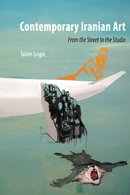
Reaktion Books, $39
Grigor, an associate professor of fine arts, pieces together a turbulent mosaic of Iran’s recent history through a study of its art — subversive art, state-sponsored art, and everything in between. This is the first comprehensive examination of contemporary art in Iran since the country’s 1979 revolution. Includes 164 color plates.
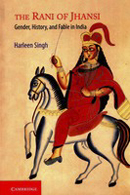
Cambridge University Press, $90
Rani Lakshmi Bai was a real woman, a queen in north-central India, who became a symbol of resistance during the 1857 Indian rebellion against the British. Singh — an associate professor of literature, and women’s, gender and sexuality studies — goes beyond a retelling of the Rani’s biography to consider how she’s portrayed in Indian and British art, thereby uncovering ingrained societal attitudes on sexuality, race, gender, caste and religion.
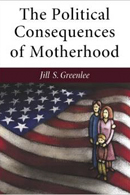
University of Michigan Press, $75
From Mother Jones, to soccer moms, to mama grizzlies, women with children have held shifting yet critical positions of influence in American politics. Politicians craft carefully calibrated appeals to earn mothers’ support. And women often find that having children spurs their activism, or leads them to take more conservative stances on some issues. Greenlee, an associate professor of politics, probes these enduring political aspects of motherhood, and more.
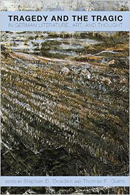
Camden House, $99
How do artists, intellectuals and historians help us make sense of great misfortune? To plumb the depths of tragedy and the tragic in German literature, philosophy, music, painting and history, Dowden, a professor of German, and his co-editor present a collection of more than a dozen essays, on topics as varied as “Faust,” Freud, Nietzsche and Arendt.
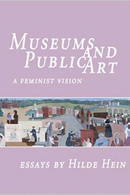
Self-published, $17.95
A resident scholar at the Women’s Studies Research Center, Hein sorts through possibilities, attitudes and influences to answer a complex question: What would a feminist-initiated and -run museum look like? In doing so, she adds dimension to a larger and relatively unexplored issue — how feminist thinking could transform public institutions in general.
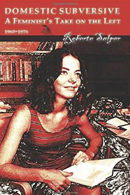
Anaphora Literary Press, $20
During the late ’60s and early ’70s, the FBI compiled hundreds of pages of surveillance notes on Salper, now a Women’s Studies Research Center resident scholar, branding her a “domestic subversive” essentially because she was a feminist and a political activist. This lively memoir of a difficult yet hopeful era for the left wing in America will strike sympathetic chords in activists both young and old.
Alumni books
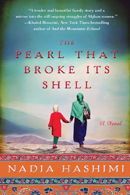
William Morrow, $25.99
This debut novel by Hashimi, an Afghan American pediatrician, is a spellbinding depiction of the plight of women and girls in Afghanistan. In intertwining narratives, an early-20th-century woman and her 21st-century great-great-granddaughter face disturbingly similar trials: numbing social inequities, domestic violence, political chaos. Yet, in parallel strokes of luck, the paths of both are altered by bacha posh, an ancient Afghan practice that allows some girls — for a time, at least — to dress and live as boys, and eke out a measure of autonomy in the world.
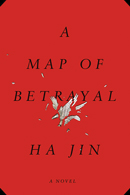
Pantheon, $26.95
The author of the National Book Award winner “Waiting” weaves a novel about a double life, and the way lies can reverberate through several generations of a family. A Chinese American woman, whose father was tried and convicted for acting as a mole for China inside the CIA, finds his long-hidden diary, and is shaken by the additional secrets it spills. As she digs deeper, she is forced to reckon with many different kinds of deceit.
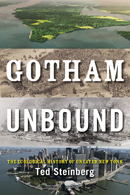
Simon & Schuster, $32
Pity the poor, long-suffering land mass underneath New York City. A total of 301 soggy sq. miles supports 8 million residents, 53 million annual visitors, end¬less tons of infrastructure, and one of the world’s largest concentrations of wealth, industry and commerce. The story of how verdant salt marshes and forests were displaced by this still-expanding burden is masterfully told by Steinberg, a Case Western Reserve historian, who also details the Big Apple’s vulnerability under the looming shadow of climate change.
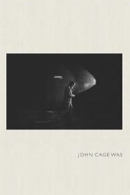
Wesleyan University Press, $55
From 1967 to 1972, Klosty took in-the-moment photos of sonic pioneer John Cage as he composed at the piano, relaxed with friends and puzzled over endless games of chess. The duotone images reproduced in this handsome oversize volume are combined with statements of appreciation — most of them under 100 words and centered around the phrase “John Cage was” — from Mark Morris, Yoko Ono, Jasper Johns and other Cage fans and friends. A mesmerizing visual document, with an elegantly poetic soul.
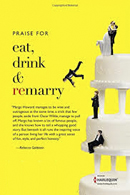
Harlequin, $24.95
Howard — the daughter of the late Eppie Lederer, aka Ann Landers — is widely prized for her adroit dispensing of wit, wisdom and wry asides, a skill her Twitter feed, @Margoandhow, showcases many times a day. In this memoir, Howard looks back at her marriages — a quartet of them, the fourth blissfully happy — to proclaim, with equal helpings of humor and insight, that you should never, ever give up on love.
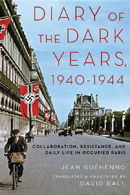
Oxford University Press, $29.95
Professor emeritus of French and comparative literature at Smith College, Ball pens the first English translation of this journal written by a French antifascist during the Nazi occupation of Paris. Filled with quotidian details startling in their immediacy, the diary is also a powerful expression of revulsion, as Guéhenno, a well-known intellectual of his day, watches his country’s descent into tyranny, hypocrisy and fear.

University of California Press, $45
Audiophiles of all stripes love stumbling upon musical treasures buried in YouTube’s recesses. Now, for the first time, a new history of the Metropolitan Opera makes extensive use of documentary material captured by audio, visual and Internet technologies to add color to its portrait of an institution. The Affrons — Charles is professor emeritus of French literature at NYU — tell the tale of the Met chronologically, dividing its lifespan into 11 eras and focusing on a composer or a canon that represents each.
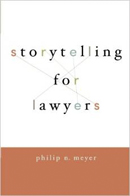
Oxford University Press, $19.95
This interesting book grows from a simple observation: Successful legal arguments are good stories told well. Meyer, professor of law at Vermont Law School and a former trial lawyer, fills a void in the law-school curriculum by examining sources as varied as the movie “High Noon,” the novel “Slaughterhouse-Five” and the memoir “This Boy’s Life” to help legal experts compose narratives that are “effective, purposeful and persuasive, compelling and factually meticulous, and truthful.”
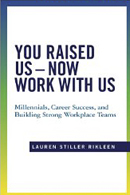
American Bar Association, $24.95
Why can’t he figure out how to use social media? Why does she keep asking for a raise? Why won’t my boss let me work from home? Like a genial office-retreat facilitator, this book gives Baby Boomers, Gen Xers and Millennials a fresh understanding of their generational differences along with sensible pointers for working together in harmony. Rikleen, executive-in-residence at Boston College’s Center for Work and Family, bolsters her advice with data from her own research.

University of Georgia Press, $32.95
When Jews arrived in America, they tended to skirt the countryside and head directly to the cities. Moore, a history professor at the University of Michigan, explains the reasons for this choice and the effect it had on the practice of American Judaism. The urban concentration continues today, the author notes: Though Jews make up about 2 percent of the U.S. population, most live in localities where they compose as much as 4 to 30 percent of the population.
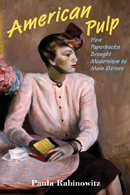
Princeton University Press, $29.95
Starting in the 1930s, inexpensive mass-produced paperbacks opened the eyes of Americans who until then hadn’t seen much beyond their corner of the world. Now any reader with a few cents to rub together could soak up serious fiction and nonfiction, or escape into crime novels and titillating romances. Rabinowitz, a professor of English at the University of Minnesota, explores the political, social and aesthetic impact of this democratizing sea change.
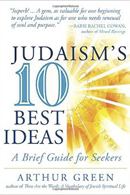
Jewish Lights Publishing, $9.99
When you’re free to follow any religion, why be Jewish? That’s the question Green, the Brudnick Professor of Jewish Philosophy and Religion at Hebrew College, attempts to answer in this insightful, accessible book, which explains to 21st-century readers why and how an ancient system of values can serve as an authentic beacon in their lives.
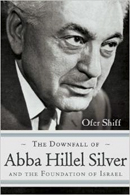
Syracuse University Press, $24.95
In the years before Israel’s founding, Abba Hillel Silver was the leading American voice in the Zionist movement. But by early 1949, he had resigned from all his high-profile positions in the movement to work as a rabbi at a synagogue in Cleveland. Shiff, an associate professor at the Ben-Gurion Research Institute, traces Silver’s unexpected reversal of fortune, the result of an ideological power struggle between those who embraced a Diaspora-Zionist perspective, as Silver did, and Israeli Zionist leaders.

Oxford University Press, $65
American fiction produced during the latter half of the 19th century bathed depictions of the family unit in a warm, sentimental, idealized glow. Except, as this book shows, when it didn’t. Jackson, an assistant professor of English at UMass Boston, finds themes in the work of Hawthorne, Jewett and other fiction writers that cast Victorian notions about family in a considerably darker and chillier light.
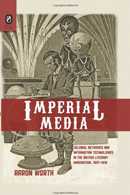
Ohio State University Press, $49.95
During Queen Victoria’s reign, a worldwide web of electric media — telegraphs, telephones, phonographs, radios and cinema — shaped Britons’ ideas about their global empire. Worth, an assistant professor of rhetoric at Boston University, examines how the typical Victorian’s views on imperialism were created and fed by information technology, and the extent to which these views live on in British culture today.
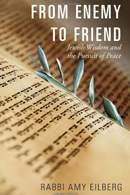
Orbis Books, $25
Eilberg, the first woman ordained as a Conservative rabbi by the Jewish Theological Seminary of America, examines what ancient Jewish texts and traditions teach us about the quest for reconciliation and peace, both as an ideal and as a practice in our everyday lives. In doing so, she writes, she hopes “to reclaim the concept of peace as a centerpiece of Jewish theology, prayer and practice.”
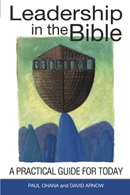
iUniverse, $19.95
In the boardroom, when the going gets tough, what would Abraham do? Arnow and his co-author mine the Bible for wise, effective leadership advice that can help you make better decisions at work and at home. Imagining 40 challenging 21st-century situations, the book analyzes the words, successes and failures of biblical figures like Abraham, Joseph and Moses to give contemporary leaders and leaders-to-be strategies for overcoming the difficulties they face. Arnow is a former clinical psychologist and an investor in the nonprofit world.
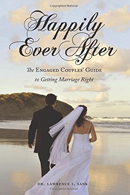
Mill City Press, $13.95
A psychologist and marriage counselor, Sank gives couples planning their wedding reception a much better chance at hosting a 50th-anniversary bash, too. To ensure a more perfect union, “Happily Ever After” advises, husbands and wives should develop their communication and problem-solving skills, keep passion alive and view change as a given in any enduring partnership.
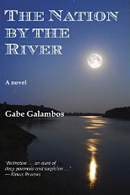
Garnet Star Publishing, $14.95
The community at the center of this suspenseful novel is located just north of Fall River, Mass., along the banks of the Taunton. But its roots extend as far back as the Spanish and Portuguese Inquisitions, and beyond. A teenage boy investigates why the adults in his town are so out of sync with the modern world, and what secrets they’re hiding. Part “Tom Sawyer,” part diaspora tale, this book offers a fascinating glimpse of little-known Jewish history.

Synthesis Center Press, $17.95
A leadership consultant and coach, Horowitz proposes a new way of looking at the groups we belong to — be they families, political systems or book clubs — and demonstrates how to use love and power as antidotes to dysfunction. Don’t finger-point when things get tough, he recommends. Remember that we all have to muddle through our problems together.
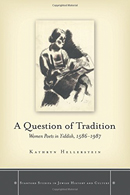
Stanford University Press, $65
According to many appraisals of Yiddish literature, women poets are marginal actors. Yet act they did, over the course of four centuries, writing significant poems about big historical events (the plague, the Holocaust) as well as more personal joys, pains and devotions. Hellerstein, an associate professor in Germanic languages and literatures at the University of Pennsylvania, clarifies the full extent of women’s contributions to the Yiddish literary tradition.
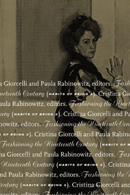
University of Minnesota Press, $25
In the third volume of their four-part “Habits of Being” series, Giorcelli and Rabinowitz present essays that size up and deconstruct fashion in the 1800s, the era when the latest styles moved within the reach of middle- and working-class clotheshorses. Topics include how widow’s caps and shawls function as symbols in Victorian literature.
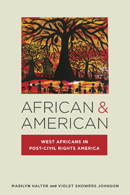
New York University Press, $26
Through interviews, analysis, and documentary and demographic evidence, Halter, a history professor at BU, and her co-author examine the large migration of West Africans to the U.S. over the past four decades. This new diaspora invites a more nuanced study of African migration, the authors say, to replace old scholarship that was “dominated by the bitter history of slavery and later the internal migrations from the rural south to the industrial centers of the midwestern United States.”
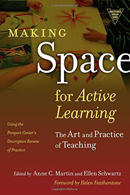
Teachers College Press, $33.95
Teachers tired of teaching to the test will appreciate this collection of classroom stories by teachers who found workable ways to respond to students’ individual modes of learning. Co-editor Schwartz, who taught in Vermont and Massachusetts public schools for nearly three decades, is a mentor to practitioner fellows at the University of Vermont.
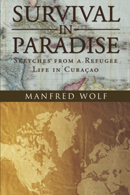
iUniverse, $17.95
Making a narrow escape from the Nazis in 1942, Wolf and his family left the Netherlands and inched their way south through Europe before sailing to the Dutch West Indies. Finding safety in the form of tropical sunshine felt like a gift, and Wolf, a former English professor, describes his life in Curaçao with affection. But the family’s awareness of all the Holocaust had swallowed cast a pall over their happiness, and complicated Wolf’s reaction to American Jewish culture when he arrived at Brandeis as a freshman in 1951. An evocative memoir.
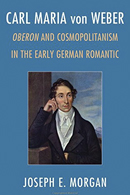
Rowman & Littlefield, $85
Morgan, an assistant musicology professor at Middle Tennessee State University, reassesses “Oberon,” Carl Maria von Weber’s 1826 opera, and other musical works to trace the aesthetics and cosmopolitanism that underlay the early Romantic and nationalist movements in Germany.
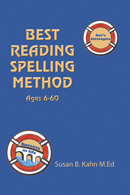
Damianos Publishing, $90
The sounds of C. “Fat and thin strategies” for W and Y. “Super-sized” suffixes. By focusing on the logic behind the construction of English-language words, Kahn helps learners of all ages improve their reading and spelling skills. This colorful spiral-bound book is an appealing resource for youngsters, people with dyslexia, ESL students and other developing readers, as well as for their teachers.
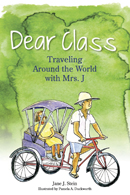
Montview Press, $17.95
Based on a real six-month trip a real teacher (Stein’s mom) took in 1963, “Dear Class” introduces young readers to 15 countries around the world. Letters written to a class back home are augmented by interesting sidebars on each country: The section on India, for instance, includes an update on snake charming, now illegal in that country even though, we learn, the cobras used by snake charmers have often been defanged. A breezy, educational travelogue.
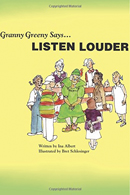
Mountain Greenery Press, $9.95
In this storybook, a wise old granny teaches children (and the adults who love them) the key to happiness: turn off the iPad, put down the laptop, and learn to be all ears. Listening with your whole heart is the best path to forging a true connection with others, readers discover — a gentle message brought to life by Schlesinger’s charming drawings. Albert, a health-care communications professional, is the co-author of “Write Your Self Well … Journal Your Self to Health” and pens a monthly column for Montana Woman Magazine.
Brandeis University Press
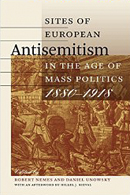
$40
To study the anti-Semitic activity that spread throughout Europe at the dawn of the 20th century, the essays collected here forgo a sweeping lens for a micro one. They look at ordinary citizens and little-studied incidents to document both the range of factors behind European anti-Semitism and the many forms it took, from Great Britain to Greece.
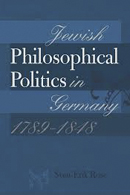
$39.96
Amid the flowering of German philosophical culture in the late 18th century, Jewish intellectuals used new ways of thinking to imagine a place for Jews in modern politics. Drawing on intellectual history, philosophy, literary studies and discourse analysis, Rose says he attempts to “unearth the heady experience of what it felt like to think Jewish politics in a Kantian or Hegelian vein.”
